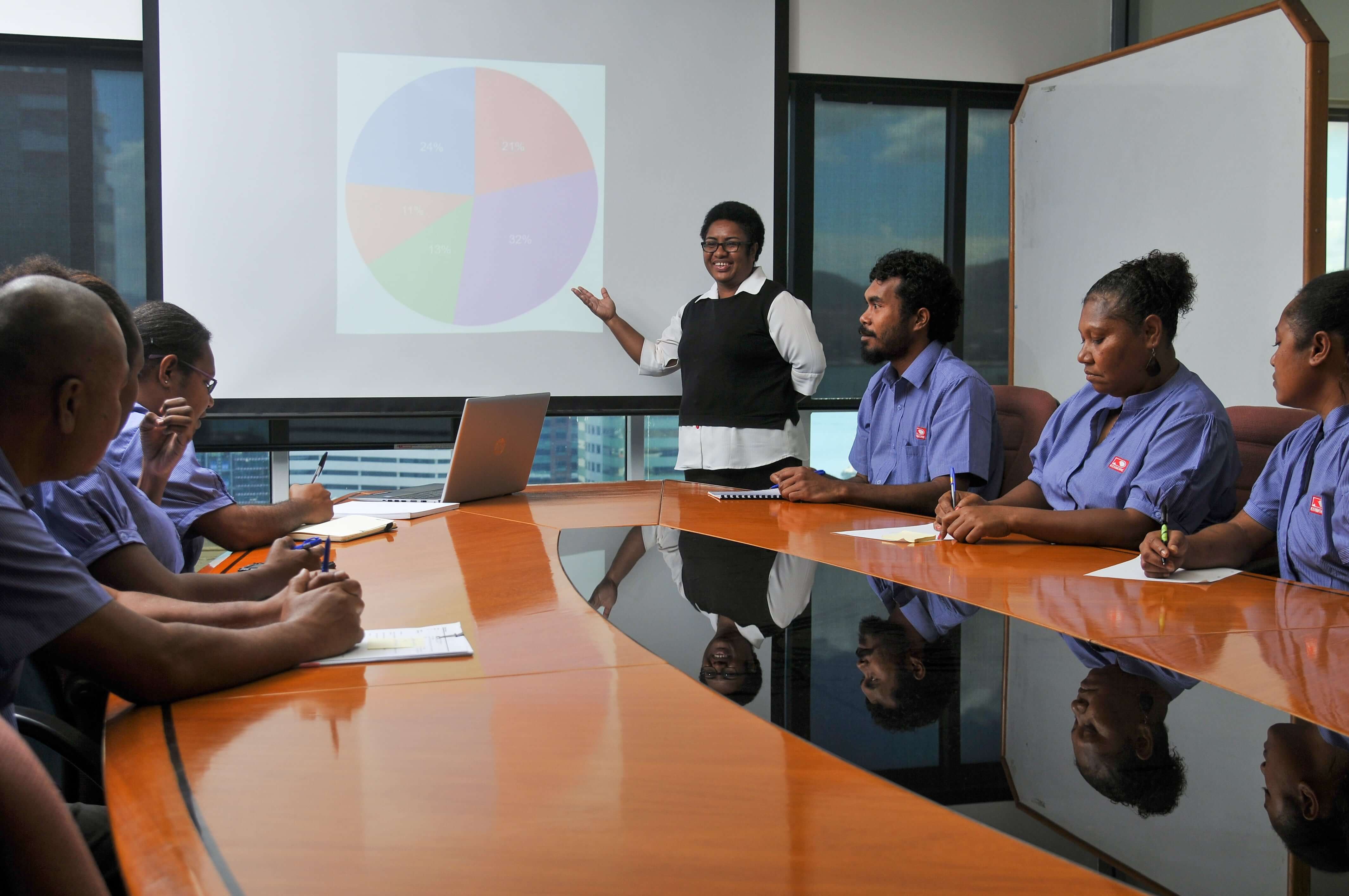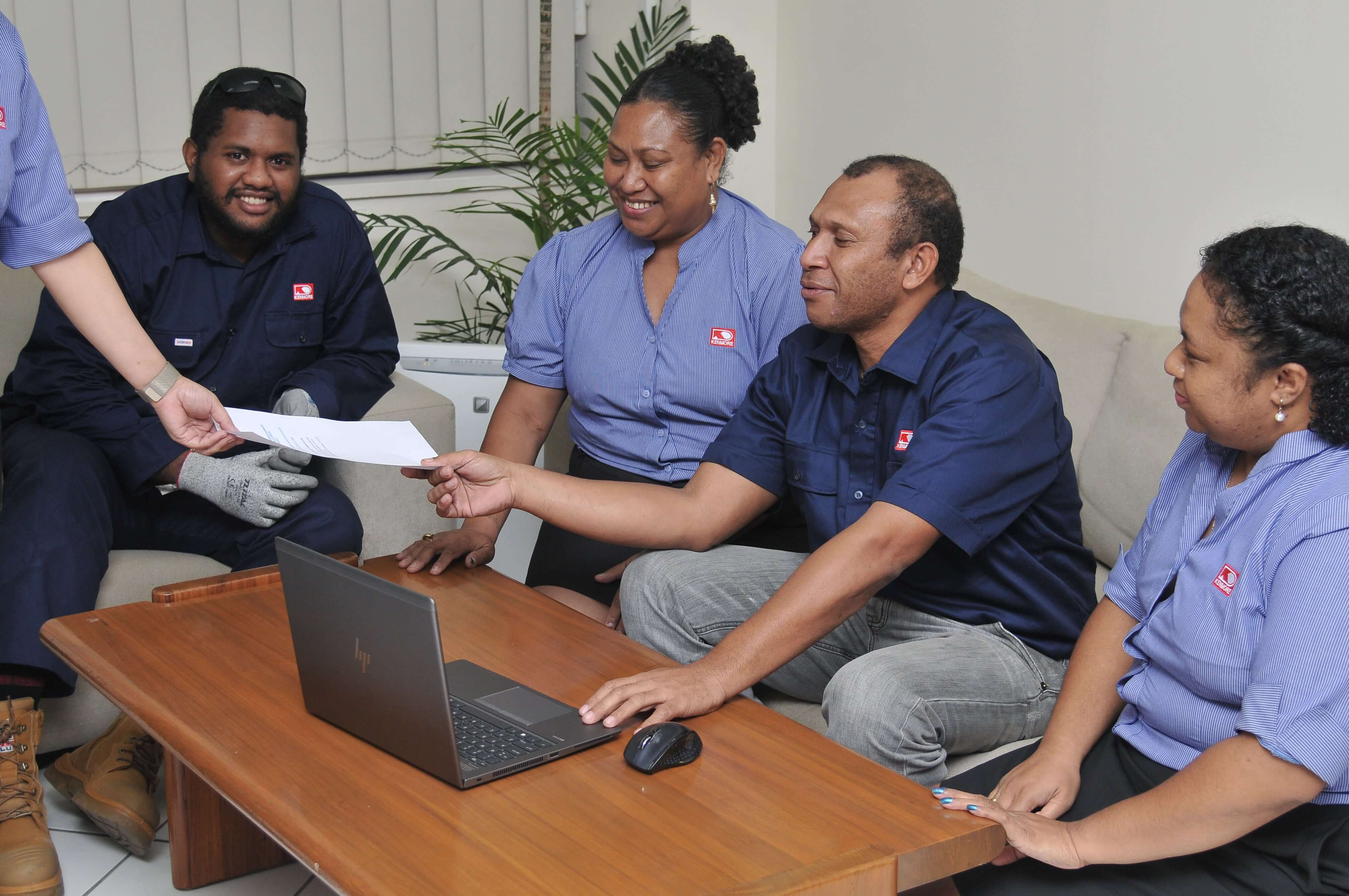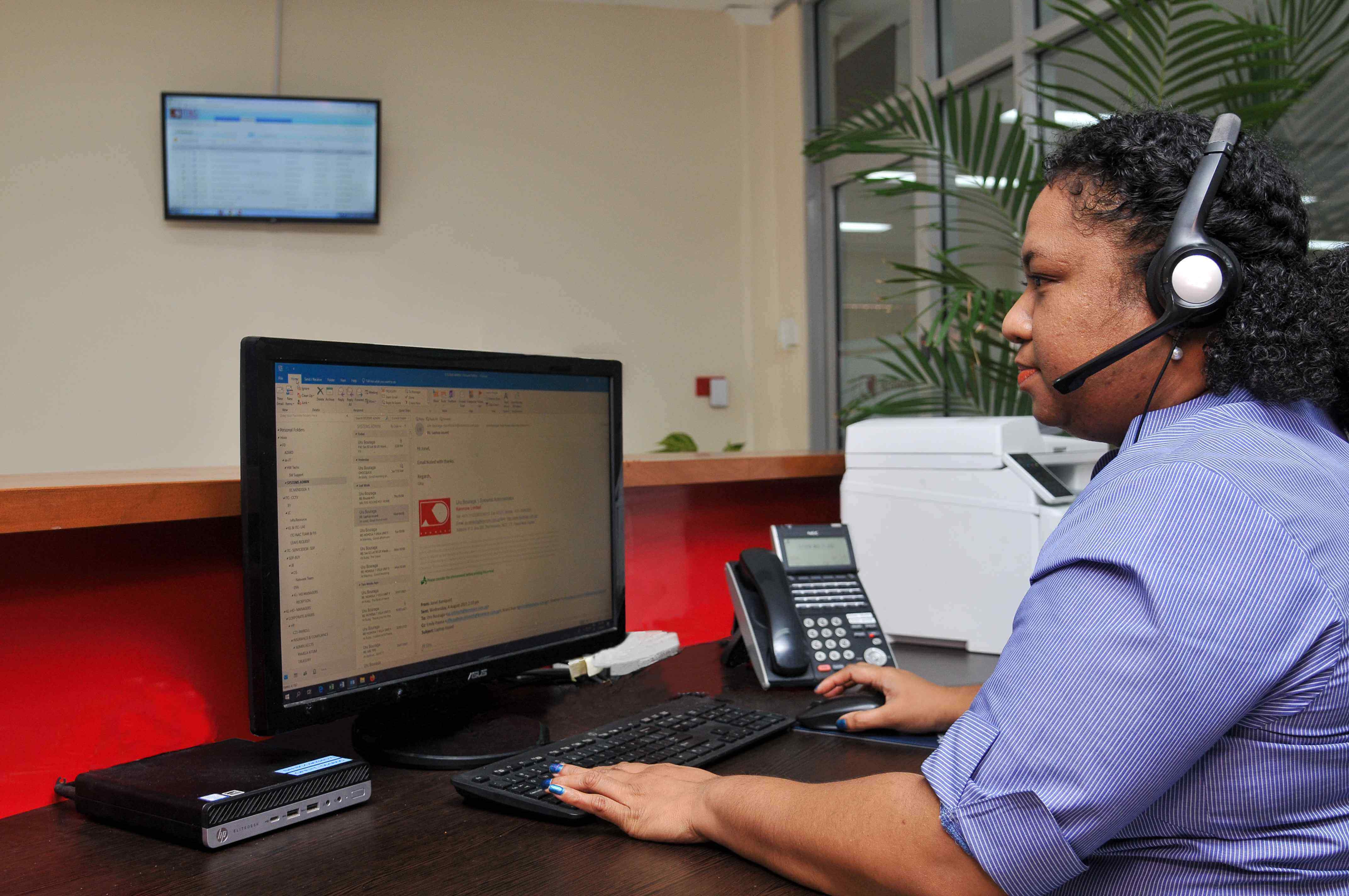Working for the Kenmore Group
We value the diversity and individuality that each person brings with them to our organisation.

The Kenmore Group has grown alongside and matured with PNG since the early 1970’s. Through various business amalgamations and mergers with the addition of different business that span many industries from Steel, Logistics, Finance and Banking and Agriculture to name a few; we are sure that there is a job opportunity waiting for you that suits your unique skill set, be it the core of the business in a technical or a specialist role working at the frontline, supervisory or a management level.
In every business we have what we like to call our ‘backbone’ or support functions to ensure that our businesses run smoothly and seamlessly for our customers. These support functions are Human Resource and Training, Finance and Accounts, Quality Health and Safety, Sales & Marketing, Business Development, Compliance, Operations and Ancillary services like Maintenance, Security and Cleaning Services.

Current Job Opportunities
Click on any of our available positions below. If you'd like to apply for one, fill up the form within the job description page, and upload your CV. We'll review your application and get back to you, if you're successful.
{{ jobs.length }} Jobs Available
| Division | Subsidiary | Position | Location | Closing Date |
|---|---|---|---|---|
| No Available Job... | ||||
What we are looking for
We want people who are understanding and respectful of others, open to taking on new challenges, learning new things and people who value team work. Being accountable for your actions and collaborating with others to improve our workplaces are very important in being a successful employee.
Each day at work is rarely the same, so our people have to be good at anticipating all sorts of situations by being smart planners, thinkers, problem solvers, communicators and organisers.

We know you have leadership traits and would like you to bring to us your own style of Leadership. Although leadership is seen as an essential trait or skill for a Supervisor or a Manager, we believe each person can develop their unique way.
Our Learning and Development programme aims to help our people grow in both technical expertise and essential skills and traits to discover your strengths and to make sure you feel you have made a worthwhile contribution to the business’s goals and objectives during the course of your career.
Recruitment & Hiring Process
This is a pipeline showing the stages in the Recruitment Stage from Application to Final Appointments and the Hiring process when On-Boarding begins.
- Application
- Pre-Screening & Employment Assessments
- Short List Interviews
- Background Checks / Other Employment Assessments / Medicals
- Short List Interviews
- On-Boarding
Employment Tips
Here are some short tips to help you when applying for a job.
-
How to Prepare an Expression of Interest Letter
This is your chance to put the best version of yourself forward, but be truthful about yourself. Keep the letter (or email) short and tailored to the job vacancy. You should be describing the skills, knowledge and abilities you have and how and what you have done that makes you the best person for the job. Keep this to about 1 or 2 paragraphs (100-200 words) to catch the interest of the recruiter/hiring team. Your application is being screened with hundreds or thousands of others. Check for correct formatting, grammar, spelling, names, terminology and salutations. Badly written letters or emails can ruin your chance of being a successful applicant by at least 95%.
-
How to Prepare a Curriculum Vitae (CV)
In Latin, this means ‘course of life’. It is a short-written summary of your career, qualifications, and education during the course of your life. On the other hand, a Resume is a shorter version of a CV.
The basics include your name, contact information, education, skills, and work experience. In addition, a CV can include, professional associations and licenses, awards, community service, languages spoken and other information relevant to the position you are applying for. If applying for an international job posting, then Citizenship information may be required as well as date of birth, marital status may be required. Provide only if this is necessary in the country you are applying for.
-
DO
-
Keep it short and simple.
As a guide, two or three pages is sufficient with dates of work, education and brief summary each job duty. An experienced person with over 10 -15 years of work experience, will insert information like tertiary education or courses, but High School or Primary education is not necessary. For a person with less than 10 years, more information would be required in detail about the job and the tasks. Educational and professional qualifications will also need to be well detailed. Keep the information relevant to the job requirements in the advertisement.
-
Be Aware of Font size and formatting
Keep the font and sizing neat and tidy. Stay with one type of font and two font sizes; one for main headings and another for paragraphs. Keep to black and white and keep it simple, yet professional. Avoid multi-coloured, decorations, patterns and borders. Numbering and bullet points shouldn’t exceed five because you should keep to key or main areas of information, pertaining to the job requirements.
-
Maintain Order
Insert information like work experience, education, courses, seminars etc in chronological order and make headings for these, and then insert when they happened in date order. Always put the most recent at the top and oldest at the bottom. Dates should be written in Date/Month/Year ie: 14 February 2000 or 14/02/2000. A location like city and country should be inserted for the work experience and courses/educational areas.
-
Keep to your Strengths
Your strengths and skills, knowledge, abilities should be stated to maximise your impact. This means if you lack the work experience, then you should lead with your educational qualifications and other skills and abilities in this area.
-
Keep it short and simple.
-
DON'T
-
Apply for jobs that do not match
Recruiters/hiring teams are seeking the best or closest match. If you do not match or meet any of the requirements, your application will be removed. Check that you have the minimum level of education, skills and training listed before applying and use the job advertisement against your CV as a checklist.
-
Forget your Cover Letter
This is the same as the Expression of Interest letter and captures the immediate attention of the recruiter/hiring team. If a cover letter is not asked for, you should still send one.
-
Put too much in the CV
Keep the information relevant to the job. There is no need to write everything you ever did, but also do not cut out too much.
-
Apply for jobs that do not match
-
The Interview
Bring your best YOU.

-
Be Prepared
Prepare by knowing about the job. If this is your first time at a new job, research about what the job entails by talking to a few people who may have done this job before or reading on the internet. Parents, friends, relatives in your community are a wonderful help.
Prepare yourself for the interview. A professional image at the interview shows that you care about yourself, your potential employer and your future. Take the time to groom yourself well from face, hands, clothing/accessories, shoes and even your documents. Clothing should be modest. Remember “first impressions are lasting impressions”, meaning that the first time you meet someone, you’d like them to have a good impression of you and for it to be long lasting. If you want to be well prepared, you could ask a friend to role play an interview session with you to practice your replies and your body language.

-
Be authentic
Meeting new people can be fun, but also nerve racking. During the interview, we want you to be comfortable and be yourself. If you are asked for an example or to describe a situation; a useful tool to use in your reply is the S.T.A.R method. Describe the Situation, what the Task was, what Action was taken and what the Result was. Be prepared to describe technical details that show your ‘know-how’, but also be open to discussing your hobbies, special talents and even a topical world issue. If you don’t know or are unsure, it’s okay to say that too or say that you are unsure, but you can also attempt an answer. At the interview, we welcome your questions about the type of work, the people in your team, pay and benefits, working hours, as well as our customers, workplace culture and training programmes. Asking these questions will help you decide whether we are an organisation that you would like to join.
-
Be Prepared
FAQ
-
Do I need to bring original copies of my certificates to the interview?
Yes. All certificates stated in your CV are required to be evidenced. Please bring it.
-
Is it a good idea to insert a photo of myself on my CV?
We do not require a photograph, however if you wish to provide one, make sure that your image is professional and portrays your image well. It should be in colour, and only from your shoulders upwards. The image should have been taken within the last 12 months.
-
Do I need to provide a Police Report?
It is a good idea to provide a current (last 12 months) Police Clearance Report, but is not essential, unless the advertisement states that it is a requirement.
-
How do I know if I am successful or not?
Only candidates who attend a shortlist or final interview will be contacted. Due to the hundreds and sometimes thousands of applications that are received, we are unable to reply to everyone. At the end of an interview, you will be told when the next update will be given. Make sure you remain contactable at all times.
-
I have a LinkedIn Profile; do I still need to send a CV in?
A LinkedIn profile is a great idea to grow your personal brand and where we can see your expanded profile, however we would like you to email or upload your CV according to the job advertisement. We recommend that you insert your LinkedIn profile as a hotlink in your CV. Only do this if you wish to.

